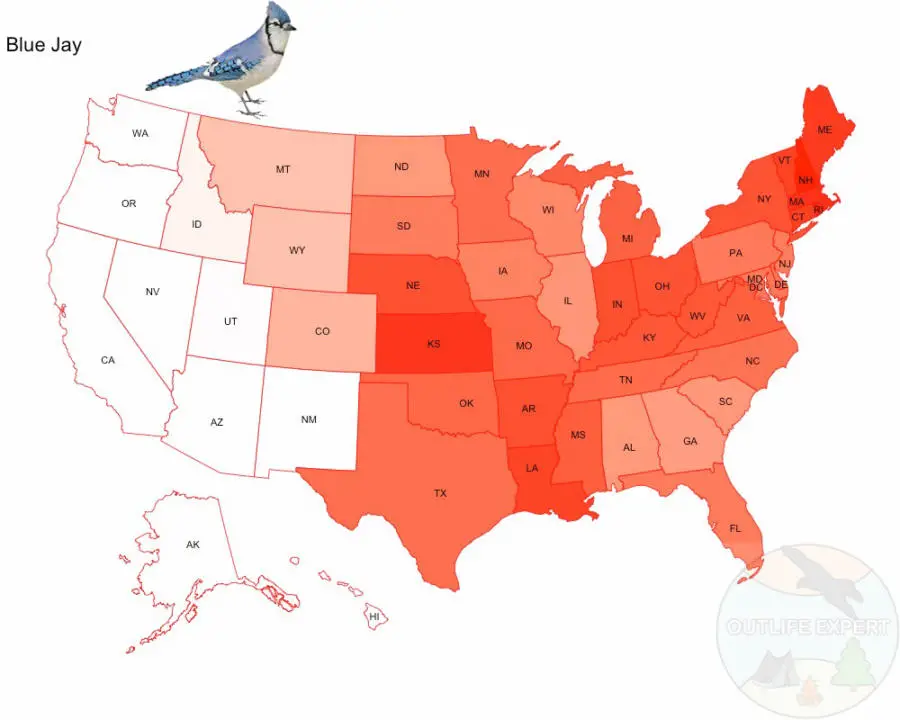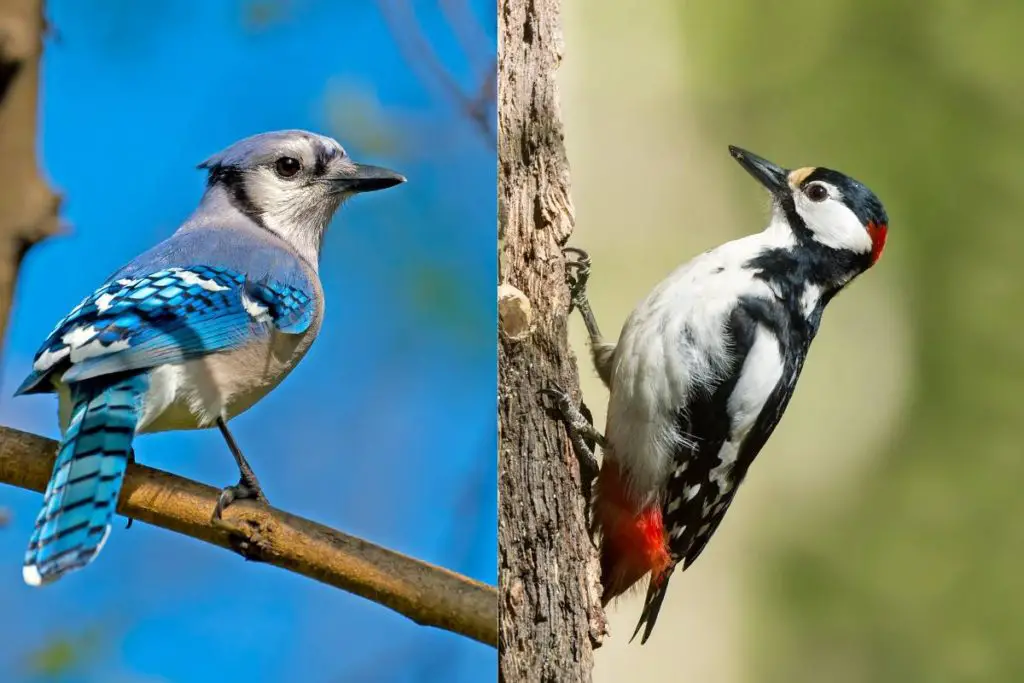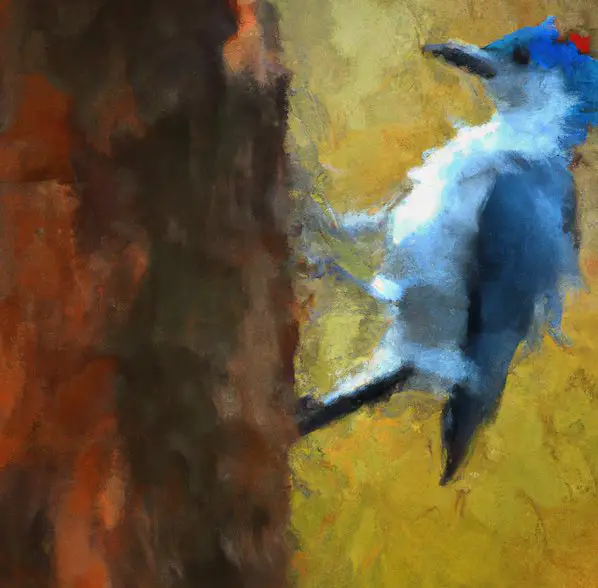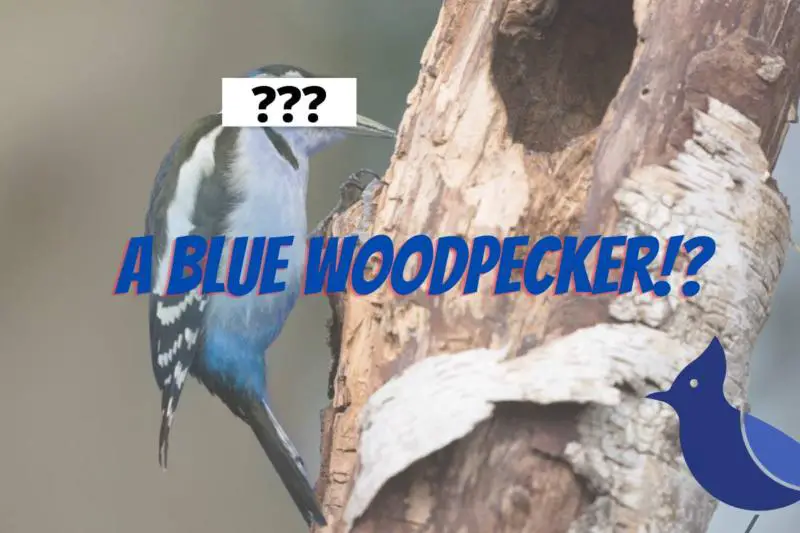There are several common woodpeckers and bluebirds in North America, and you may have encountered many of them at your backyard bird feeder already!
A common question I often encounter is, whether blue woodpeckers exist?
The answer is that there are in fact no blue woodpeckers in the US, and to the best of my knowledge also not in the rest of the world. However, common backyard birds such as the Blue Jay may resemble woodpeckers to an extent that may lead to the misconception that blue woodpeckers exist.
The idea that a blue woodpecker exists may stem from the fact that many common birds bear some of the traits also seen in woodpeckers.

We will take a look at some of these in the following.
Are Blue Jays woodpeckers?
The Blue Jay is a very common bird in the mid- and eastern parts of the US. It loves to feed at bird feeders and to hang around backyards.

While the Blue Jay may look much like a woodpecker e.g. the Great Spotted Woodpecker shown in the comparison picture below, it is in fact more related to Crows and Ravens as it belongs to the family of Corvids.

The more “hunched” position of the woodpecker helps the woodpecker keep its balance and grip when pecking rapidly at old tree trunks!
The Corvid family also includes other Jays such as the Steller’s Jay, the Gray Jay, Western Scrub Jay, Clarks Nutcracker and Magpies.
The Blue Jay and other Corvids all have strong appearances and a sturdy bill that they may occasionally use to dig out insects from wooden objects.
They may even peg at old paint or outside furniture to catch the small worms or beetles inside and supplement with calcium (from old chalk-based paint) for their egg-laying.
Also, woodpeckers are often seen together and due to their similar size and food preferences, they do tend to fight over seeds or suet at bird feeders!
In the video, a Red-bellied Woodpecker defends its feeding ground against a cheeky Blue Jay! The Red-bellied Woodpecker is, however, quite a stubborn bird that is on top of the bird feeder hierarchy, so (spoiler!) it does manage to scare away the intruding Blue Jay.
While the behavior of Jays and other Corvids may look a lot like that of many woodpeckers, they are not genetically related and there are important differences.
Woodpeckers have a very distinct way of pecking in trees in search for food and nesting ground.
The unique muscular and skull physiology of woodpeckers enable them to peck hard at very high frequencies –abilities that other birds, including the Blue Jay, lack.
The whole adaptation of woodpeckers to crawl on tree trunks is seen in the way their head is oriented in relation to their body. Their feet also reflect the need to grip tightly onto the tree in order not to fall off when pecking!
Other blue birds in the US that may look like woodpeckers
The Blue Jay would clearly be the most obvious bird to lead to the confusion that blue woodpeckers exist, but there are also other blue birds in North America that may, although more rarely, lead to this conclusion.
One such bird is the Eastern bluebird (Sialia sialis), which is also a bird native to North America. It ranges from southern Canada, through the eastern and central United States, and into northern Mexico.
Bluebirds usually live in open country such as meadows, fields, orchards and scattered among trees along wood lines, which overlaps with the same habitats as many woodpeckers.
They feed on insects such as grasshoppers and crickets, berries and fruit including mistletoe berries. But are also frequent visitors of bird feeders.

However, as the name suggests, these are only present in the eastern parts of the US, and thus will not lead to confusion with woodpeckers of the far north or western parts.
Conclusions
In this article I have tried to debunk the common misconception that blue woodpeckers exist, but hopefully it is also clear that I understand why many people think that the Blue Jays belongs to the woodpeckers.
Unfortunately, neither I, nor my other biologist colleagues have been able to dig out any evidence of the present or previous existence of blue woodpeckers, so these mythical creatures will be kept for night time stories for now!




